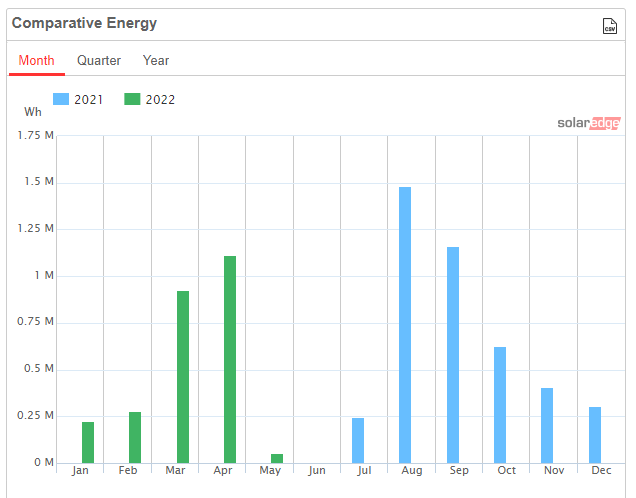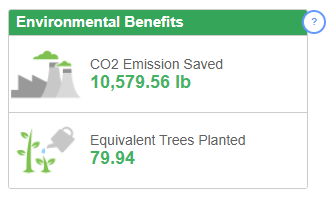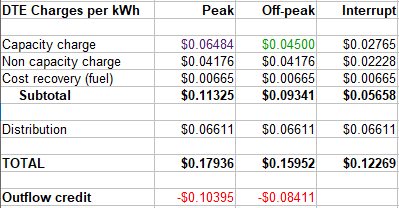Musical credits: Zoe Mulford.

Here's a good day... 7/29/2021, with a peak of 9.2 kW out of a theoretical 10kW.
The blips are, not surprisingly, clouds.
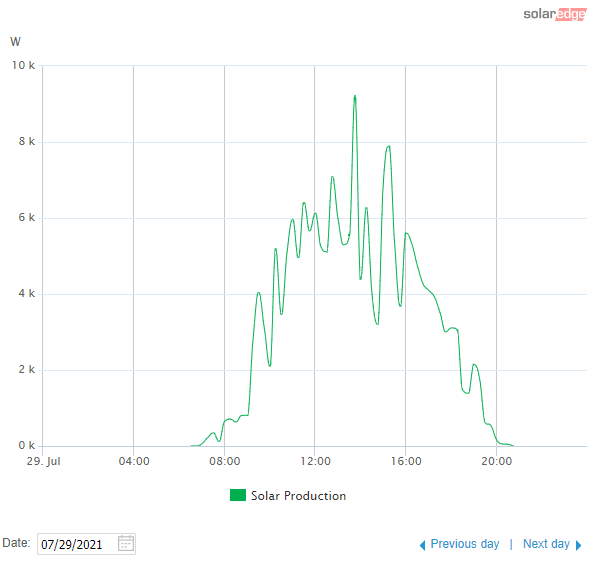
Here's a cloudless day... almost mathematically perfect:

The best news... mega watt-hours produced, by month, with total environmental summary:
The good news... year-over-year kWH "used" by month-ending (not counting hot water heater)

The 'bad' news... year-over-year total bill (electric + electric hot water header + gas), by month-ending:
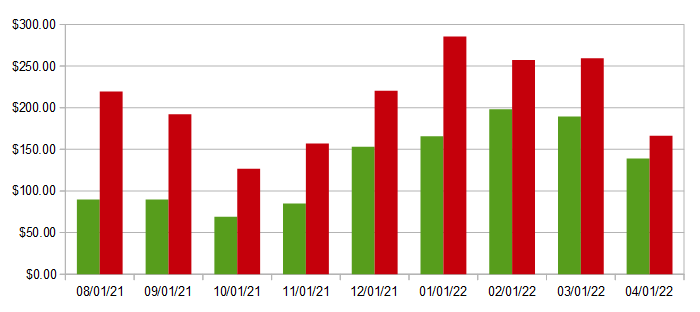
DTE's fee schedule.
Excess solar generation gets credited ("bought back")
at roughly the same rate as it is sold... except for the $0.06/kWh distribution
fee.
That's why it's good to either (a) use as much of your locally-generated power as
possible, or (b) have a battery -- so you don't pay for the distribution charge.
Rationale behind charges
Prior to 2019, DTE used "net metering" for home solar generation -- which
basically means credit for outflow = charge for inflow.
From a solar enthusiast's POV, this was great.
DTE wasn't too happy about it, and proposed some draconian changes.
The PSC split the Solomonic baby, and basically said the credits and charges
for power production had to be the same, but that DTE could still charge
for the cost of their distribution network.
On the face of it, this seems "fair".
However, the reality is a little more complicated.
Electricity does not 'travel' like packets on the Internet, going
all the way from point A (a DTE generation plant) to point B (your home).
Or vice-versa, from point C (your solar panels) to point D (well, lots of places).
Electric power distribution acts more like the water in your pipes.
If I built a big water cistern above my house (say, to collect rain-water),
and connected it to my pipes... I'd be "pumping" water back into the system.
If I "make" more water than I use... where does the excess go? Mostly to my
neighbors, i.e. to the users of water closest to me.
Should I be charged, then, for my pro-rata share of the entire city water
system? Heck, no! When I use water, yes, I'm effectively using
the entire system -- but when I add water, I'm only using a very small
part of the plumbing, so to speak.
(Fascinating digression: electrons moving thru our wiring hit a top speed
of about... 1 cm/sec.
The waves move near the speed of light -- solar panel A 'excites'
electron B which pushes on electron C which pushes on D -- so the 'push' from A to D
happens at light-speed.
But the electrons themselves are slowpokes.)
Paying it off
$20,000
- $2,000 deposit (from COVID stimulus payments)
- $5,000 federal tax rebate
--------
$13,000 Loan thru "Michigan Saves" (via lmcu.org) at 4.25% fixed
After 9 months, we're currently saving $78/month on average. This will probably
go up, since we have 4 peak-solar months coming up... but we're also adding credits
to our "excess generation bank" faster than we can use them, and it's unclear
if we'll ever get those back. (But adding the water heater will help.)
Prior to installing solar, we also opted-in to the MIGreenPower program,
which cost us about $8/month on average. Post-solar, we turned that off
(which was difficult, it kept getting re-instated!), so our actual savings
are closer to $86/month.
At current average savings rate = $86/month: 18 years (interest: $5,645)
Guess-timate w water heater = $111/month: 12.6 years (interest: $3,821)
Our actual payments $200/month: 6 years (interest: $1,800)
Our discussions with Homeland Solar suggested a payoff time of 10-15 years,
so including the water heater, that's right on target.
Ironically/fortuitously, the "Michigan Saves" loan led us to
LMCU's 3% checking account(!). So in one sense, we're only paying 1.25%.







